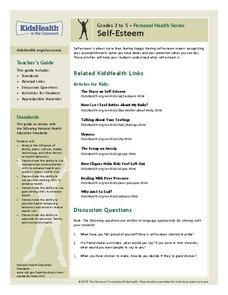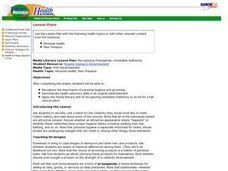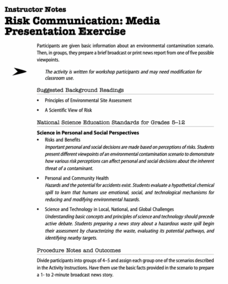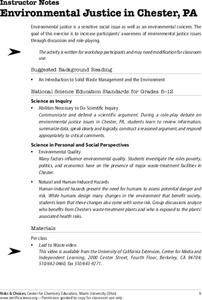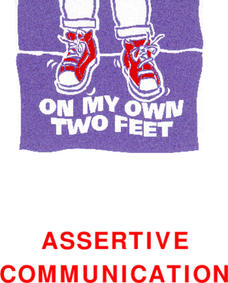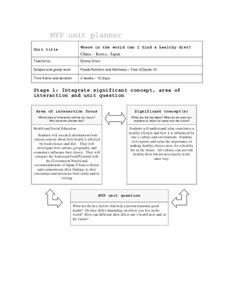Nemours KidsHealth
Water Safety: Grades K-2
Students identify bathtub and pool safety rules. In this water safety lesson, students create a bathtub safety book and water bottle label that contain pool and water safety rules.
Curated OER
Self-Esteem
Students determine what contributes to their self-esteem. In this self-esteem lesson, students participate in a discussion by answering a list of questions. They complete two handouts; one entitled "Who's in the Mirror?" and another...
Nemours KidsHealth
Self-Esteem: Grades K-2
Second graders create a flower where each petal has their talents and unique qualities on the flower. For this self esteem lesson plan, 2nd graders understand that they are all special in their own way.
Curated OER
Planning for a Healthy Life
Students investigate the difference between diseases that are controllable and those that happen by chance. They discuss the chance of dieing in a war with that of dieing from a disease that has controllable factors. They complete a...
Curated OER
Information, Please
Young scholars view the video "Healthcare Crisis: Who's at Risk?" After researching various healthcare plans, students present their findings to the class.
Curated OER
The Risks of Everyday Living
Students compare their perceptions of risk to the perceptions of scientists and risk professionals. in small groups, they evaluate risks on a scale of 1 to 10 for the average American on a yearly basis.
Discovery Education
Mood Music!
Grouchy? Sad? Here's a great resource that shows kids how music can be used to lift their spirits. Kids collect and chart data on the effects of music on emotions. After analyzing the results of their experiment, they develop their own...
Curated OER
Recognizing Propaganda - Unreliable Testimony
Students investigate how product endorsements can be a form of propaganda. They analyze various shampoo ads, discuss celebrity endorsements and unreliable testimony, and create a written non-propaganda ad for or against a celebrity...
Curated OER
Skin Deep and Other Teenage Reflections by Angela Shelf Medearis
Tenth graders explore how adolescents attempt to tain peer acceptance.
Curated OER
Toxicants and California Blackworms
Learners determine the normal behavior of California blackworms. They determine how various concentrations of assigned toxicants affect the worm's behavior. Students are introduced to testing of potential toxicants, an important...
Curated OER
My Feelings
First graders examine and discuss different emotions and feelings, and how people can react when they are in an unsafe situation. They discuss a feelings thermometer, and complete a worksheet involving identifying how they feel in...
Missouri Department of Elementary
My Feelings
Encourage self-awareness with a lesson that challenges scholars to identify feelings—happy, sad, mad, and scared. Using a feelings thermometer, similar to that of a bar graph, pupils discuss how they would feel in specific scenarios then...
Curated OER
Risk Communication: Media Presentation Exercise
Young scholars work in groups to prepare a brief broadcast or print news report from one of five possible viewpoints about an environmental contamination scenario. Students are given basic information about a chemical spill in a small...
Curated OER
Bioethics and Effective Health Care
High Schoolers participate in a class discussion on the ethical issues faced in the health care industry today. In groups, they develop their own definition of bioethics and role play the role of one of the various types of members of...
Curated OER
How Toxic Is It?
Students participate in an activity in which they investigate the scientific method and seed germination as well as practice graphing and metric measuring skills. Students examine toxicity by exposing Wisconsin Fast Plants seeds to toxic...
Curated OER
Environmental Justice in Chester, PA
Over several days, learners communicate and defend an argument regarding environmental justice issues in Chester, PA. After discussing the issue and viewing a video about the location of several toxic waste facilities in Chester, they...
Department of Education (Ireland)
Assertive Communication
Assertive communication is an acquired skill. Teaching young people to ask for what they need and to believe that they have a right to ask is at the core of a unit on assertive communication. Over the course of the unit, middle and high...
Curated OER
How Does a Friend Act?
Students brainstorm a list of characteristics that friends should and should not have. In groups, they are given a set of hand puppets in which they role-play different scenerios in front of the class. To end the lesson, they are shown...
Missouri Department of Elementary
What Is Important to Me?
Pupils complete an activity sheet to determine what values are most important to them. They then discuss their responses with partners before sharing the results of the discussion with the class.
Ohio State University
Where in the World Can I Find a Healthy Diet?
What constitutes a healthy diet? In what way is a healthy diet defined and influenced by culture? Groups investigate the community and national resources available in a country, and then design a healthy diet for its citizens.
Curated OER
Can You Help A Friend?
Students take on the role of a ten year old girl, "Jessica." Jessica's friend has moved away from the area and is texting people she doesn't know in chat rooms. Students work in groups to write a message for Jessica to send to her...
Curated OER
Youth and weightlifting
High schoolers research and develop a weight training program appropriate for an 13-16 year old.
Curated OER
Survivors
Seventh graders explain their understanding of their strength and how it is helpful in a group situation. They also complete graphic organizers by writing at least four of their own personal strengths. Students write about their...
Curated OER
AIDS Child Activist Dies
Students read an article on AIDS child activist Nkosi Johnson, and examine the extraordinary difficulties faced by students who have AIDS. They write reflection papers on Nkosi Johnson and how his example can help people in their own lives.



